Exploring the World of Chickens: 30 Fascinating Facts About Chickens

Chickens are one of the most ubiquitous domesticated animals in the world. As a key source of meat and eggs, these remarkable birds play an integral role in feeding people across the globe.
Beyond their practical uses, chickens have a rich history and exhibit some amazing abilities. Their complex social structures, capacity for emotional intelligence, and unique communication methods reveal surprising truths about these creatures.
Whether you’re a seasoned chicken farmer or simply curious to learn more, this comprehensive guide will uncover 30 fascinating facts about these captivating birds. Dig in to expand your knowledge of all things chicken!
1. Chickens Originated in Asia Over 8,000 Years Ago

The ancestors of modern chickens were domesticated from wildfowl in Asia over 8,000 years ago. Originally bred for cockfighting and religious rituals, chickens were later raised for meat and eggs as early agricultural societies developed.
Archeological evidence shows chickens were domesticated in China as far back as 10,000 years ago. From their origins in Asia, chickens have since spread around the world to become one of the most ubiquitous domesticated animals.
2. There Are Over 25 Billion Chickens Worldwide
As a result of their long history alongside humans and usefulness as a source of food, chickens are now the most abundant domesticated animal species on earth.
There are over 25 billion chickens in the world at any given time according to the Food and Agriculture Organization of the United Nations. To put that in perspective, there are only about 8.1 billion humans on the planet (2023).
The global chicken population continues to grow to meet the increasing demand for meat and eggs.
3. Chickens Have a Complex Social Hierarchy
Although often dismissed as simple-minded, chickens have a sophisticated social structure and hierarchy. Each flock develops a pecking order that determines access to food, nesting sites, and mates.
The most dominant chickens have priority, while lower hens get picked on and pecked. Hens communicate constantly to establish and maintain this social order.
4. Chickens Have Their Own Complex Language
Within flocks, chickens have well-developed methods of communication. Their vocalizations convey over 30 distinct meanings from expressing dominance to signaling danger.
Mother hens communicate with chicks using soft, reassuring clucks. Roosters announce mating opportunities with specific calls. Alert calls signal the approach of a predator or danger.
This complex language allows chicken flocks to coordinate and maintain social order. They have specific food calls, predator alarm calls, mating calls, and calls to signal the location of nest sites.
5. Chickens Have Memories That Last Years
Many people assume chickens have poor memories, but they have demonstrated impressive cognitive abilities in scientific studies.
Chickens can remember:
Their spatial memory and ability to solve complex problems also indicate chickens are smarter than commonly believed.
6. Hens Sing to Their Eggs in the Nest
A few days before eggs hatch, mother hens start clucking softly while sitting on the nest. This is called “maternal vocalization” and may help chicks start life with learned knowledge of their mother’s voice.
Mother hens also gently cluck and purr to their newly hatched chicks. These affectionate sounds help the chicks bond with their mother and settle into the world.
7. Some Chickens Lay Blue or Green Eggs
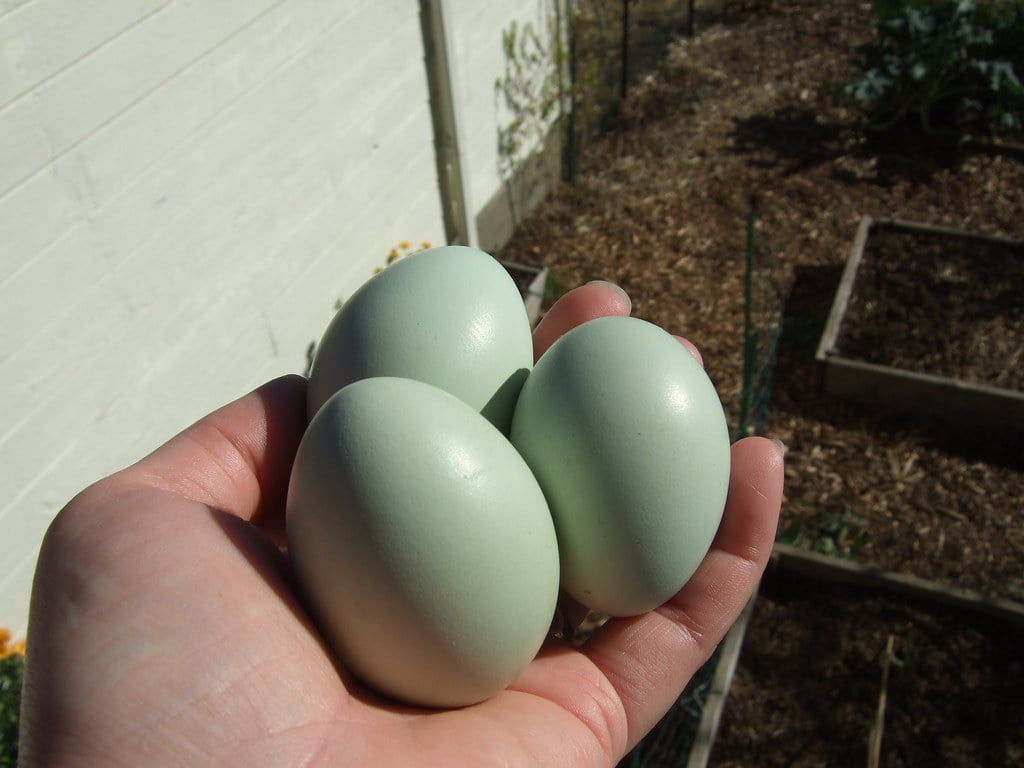
While white and brown eggs are most common, some breeds lay eggs in striking shades of blue or green. This coloring stems from pigments the hens produce and deposit onto the eggshell as the egg develops in the oviduct.
Breeds like Ameraucana, Araucana, and Cream Legbar lay blue eggs. The South American Orloff breed is known for mint green eggs.
8. Chickens Evolved from Dinosaurs
Chickens belong to the scientific order Galliformes which includes birds like pheasants, turkeys, grouse, and quail.
These gallinaceous birds all evolved from Theropods, a dinosaur group that included Velociraptors!
So while they may seem benign, chickens retain some similarities to their prehistoric dinosaur ancestors.
9. Mature Hens Lay 300+ Eggs Per Year
On average, a healthy hen lays one egg daily during her first couple years of life. This adds up to between 250-300 eggs annually.
Production gradually declines as the hen ages. The precise quantity and quality depend on factors like breed, diet, season, and overall health.
10. It Takes 24-26 Hours to Form an Egg Within the Hen
The egg formation process is a marvel of biology. It takes a day for each egg to develop and progress through the chicken’s reproductive tract called the oviduct.
First, the ovary releases the yolk into the oviduct. It’s gradually layered in egg whites, membranes, and finally the hard shell as it travels through the organ. After 24-26 hours, the complete egg emerges.
11. Chickens Produce Larger Eggs as They Mature
Due to anatomical growth, younger hens lay smaller eggs while older, more mature hens lay larger eggs.

Pullets (young hens) under one year lay eggs weighing an average of 48 grams. Hens over one year old produce bigger eggs around 55-60 grams.
The difference in egg size becomes noticeable when chicken farmers transition pullets into the laying flock.
12. Some Birds Lay Eggs Without a Shell
On very rare occasions, a chicken might lay a shell-less egg. Without the hard shell, the internal egg membranes envelop the egg contents.
These anomalous eggs feel rubbery and leathery. They won’t keep long without the protective mineral shell.
13. Double Yolk Eggs Occur Randomly
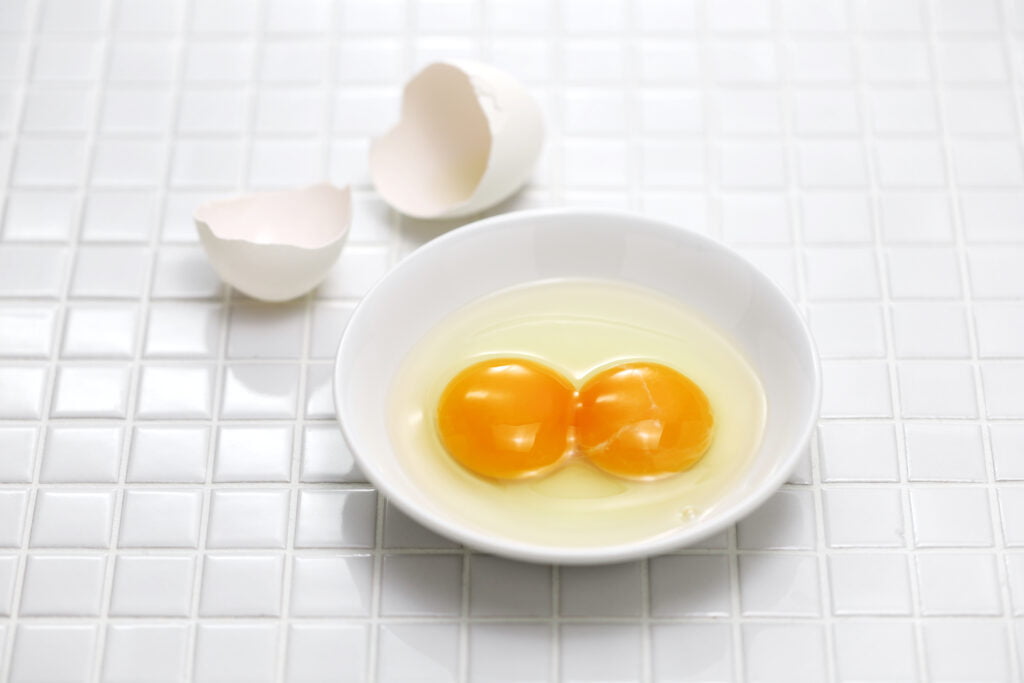
While most eggs contain one yolk, sometimes anomalies during egg formation result in two or more yolks encased in one shell.
Double yolk eggs are???t the result of chicken age, breed, or diet. They simply occur randomly at a frequency of about 1 in every 1,000 eggs.
14. Chickens Require Lots of Calcium for Egg Production
Forming all those sturdy eggshells takes a lot of calcium! The mineral is deposited onto the egg as it develops in the shell gland part of the oviduct.
Laying hens need about 4-5 grams of calcium daily to meet the demands of egg production. Most of this calcium is obtained through their feed.
15. Broody Hens Will Care for Any Eggs
A broody hen is one who wants to hatch eggs and be a mother. Their strong maternal drive causes them to sit on and incubate any eggs in the nest.
Broody hens show no discrimination and will lovingly incubate their own eggs, eggs from other hens, or even artificial eggs if given the chance!
16. Chickens Can Flutter Up to 10 Feet High
Although they can’t migrate like other birds, chickens are capable of brief flight. Flapping their wings, chickens can launch upwards and flutter across short distances.
Under ideal conditions, chickens can flutter up to 10 feet high and cover up to 300 feet in a single flight. Their wings provide enough lift for short aerial feats.
17. Chicken Eggs Develop Only Under Incubation
If not incubated, a fertilized egg won’t commence development. Eggs require temperatures between 99-105??F and high humidity to start embryo growth.
Once incubation begins, it takes 21 days for chicken eggs to hatch. Only broody hens or mechanical incubators can provide the specific conditions needed.
18. Chickens Recognize Faces and Remember People
Research shows that chickens have excellent facial recognition abilities. They can differentiate between people and identify those who have cared for them in the past.
Their long-term memories allow chickens to recall individuals for well over a year after they last interacted. This suggests advanced cognitive capacities.
19. Chickens Have Distinct Personalities
Just like humans, each individual chicken has unique personality traits. Some are bold and adventurous while others are shy and reserved.
Scientists have identified personality dimensions in chickens such as fearfulness, curiosity, and sociability. Personality can also influence how chickens interact in groups.
20. Chicken Hypnosis is an Actual Phenomenon
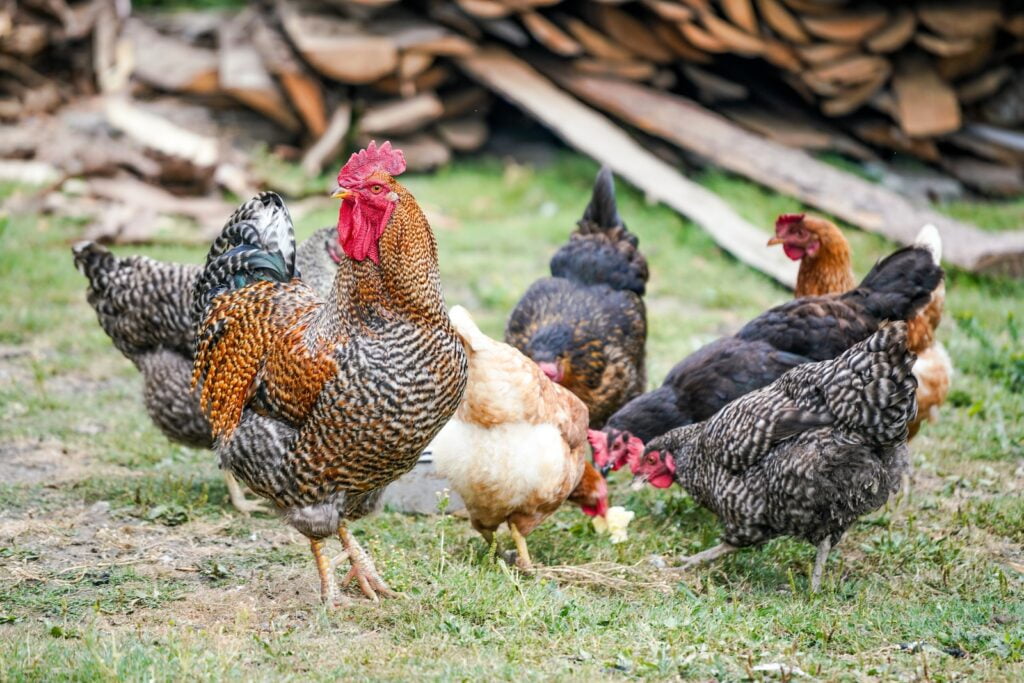
By carefully cradling a chicken on its back or holding it still, the bird can enter a trance-like state. In this position, chickens become still and their bodies appear limp.
Scientists call this phenomenon ‘tonic immobility’. It’s an adaptive response to being gripped by predators in the wild. The temporarily paralyzed state helped chickens survive attacks.
21. Chickens Have Distinct Alarm Calls
When danger approaches, chickens have special alarm calls that put the flock on high alert. Studies of chicken vocalizations identified particular sounds that communicate specific predators.
For example, roosters crow a distinctive call upon sighting an aerial predator like a hawk. HensIssue specific alarm calls in response to terrestrial predators like foxes or badgers.
22. Chicken Eyes Have Special Structures for Stable Vision
Chickens have several adaptations that provide stable, high-resolution vision. Their eyes are located on the sides of their heads and can move independently.
In addition, their heads are stabilized by a special structure called a salt gland above each eye. This gland functions like an anchor, securing their vision.
23. Some Chickens Lay Extra Small Eggs Called ‘Fart Eggs’
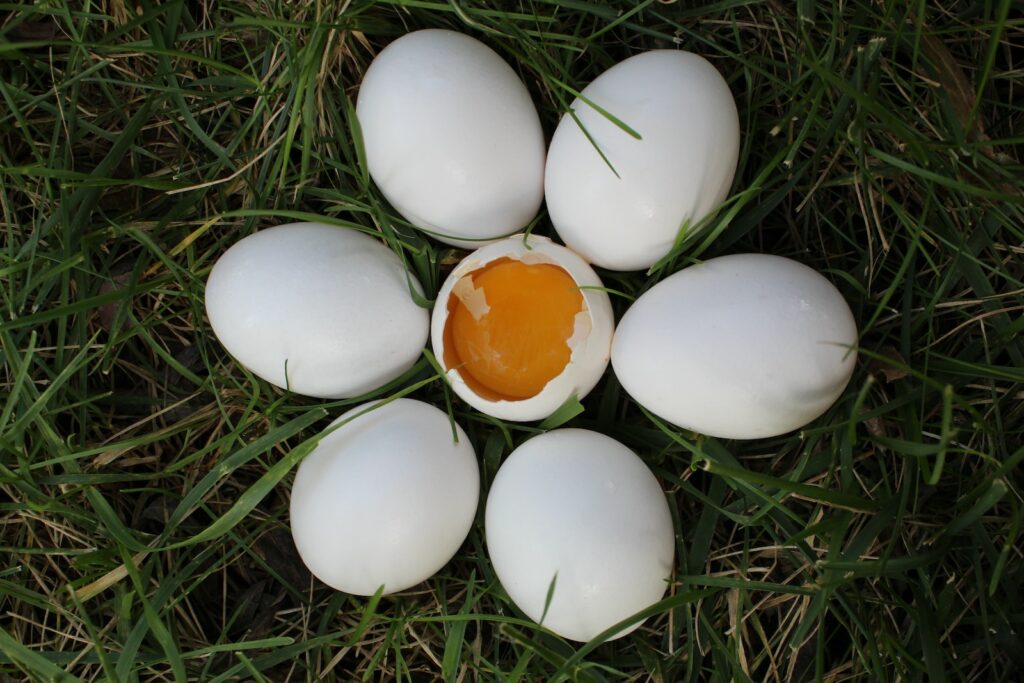
On occasion, a hen might lay an extra small and thin-shelled egg called a ‘fart egg’ or ‘soft egg’. These peculiar eggs are produced when the outer egg membranes fail to rotate correctly inside the oviduct.
Without proper membranes, the egg can’t expand normally. Fart eggs don’t usually contain a yolk or much substance.
24. Chicken Breeds Vary Greatly in Size
Chicken breeds have been selectively developed for different purposes resulting in huge variability in size. Large fowl breeds like Jersey Giants can weigh up to 13 pounds.
On the small side, bantam breeds such as Dutch Bantams weigh just 1.5 pounds fully grown. Other breeds range between these extremes.
25. Some Chickens Lay Colored Eggs
While white eggs are most common, some chicken breeds lay eggs with beautifully colored shells. Breeds like Ameraucana and Araucana lay eggs in shades of blue.
The Chilean Orloff comes in white and black varieties – the white strain lays mint green eggs while the black strain lays chocolate brown colored eggs.
26. Meat Chickens Reach Slaughter Weight at 7 Weeks Old
Broiler chickens, bred specifically for meat, grow at an astonishing rate due to genetic selection. They can reach their slaughter weight of 6-8 pounds in just 7 weeks.
In contrast, chickens bred for egg laying don’t achieve adult size until 16-20 weeks of age. Meat chickens rapidly convert feed into body mass.
27. Chickens Have a High Egg Spoilage Rate
Chicken eggs spoil fairly quickly if not handled properly. At room temperature, fresh eggs have a high spoilage rate of 1-2% per day. Refrigeration slows this down.
To test for freshness, submerge eggs in water. Fresh eggs sink while expired eggs float due to increased air pockets inside the shell.
28. Chickens Form lifetime Bonds with Other Chickens
Within the hierarchy of a flock, chickens form close relationships and bond with flockmates. These lifelong connections are shown through proximity, preening, and sharing food resources.
Lifelong bonds provide stability within the flock and help reduce aggression. Researchers believe the companionship brings happiness and comfort.
29. The Rooster is Essential to Fertilization
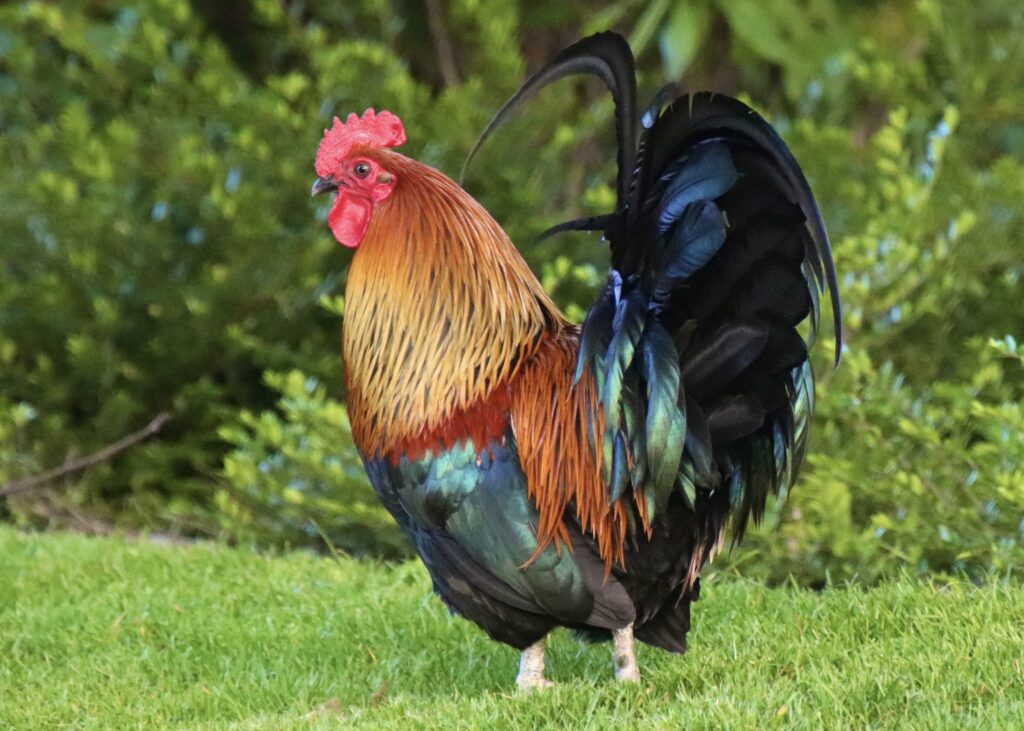
A common misconception is that hens can lay fertilized eggs without a rooster – but that’s anatomically impossible! The rooster provides the male sperm to fertilize the hen’s ova and allow the embryo to develop.
In the absence of a virile rooster, all eggs laid will be unfertilized and unable to hatch into chicks.
30. Chicken Coops Should Have At Least 3 Square Feet Per Bird
To ensure healthy, productive chickens, each bird in a flock needs adequate space. Commercial producers recommend a minimum of 3 square feet per bird within coops and runs.
Overcrowding causes stress, can injure chickens, and increases risks of illness. Free range access allows chickens room to roam and exhibit natural behaviors.
Key Takeaways on Chicken Facts:
So there you have it – 30 captivating facts about one of the world’s most common yet mystical creatures, the chicken! From their dinosaur lineage to the affectionate songs they sing to their eggs, chickens provide never-ending fascination. Next time you eat an omelet or watch hens roaming in a coop, remember all the wonder behind these remarkable birds.





